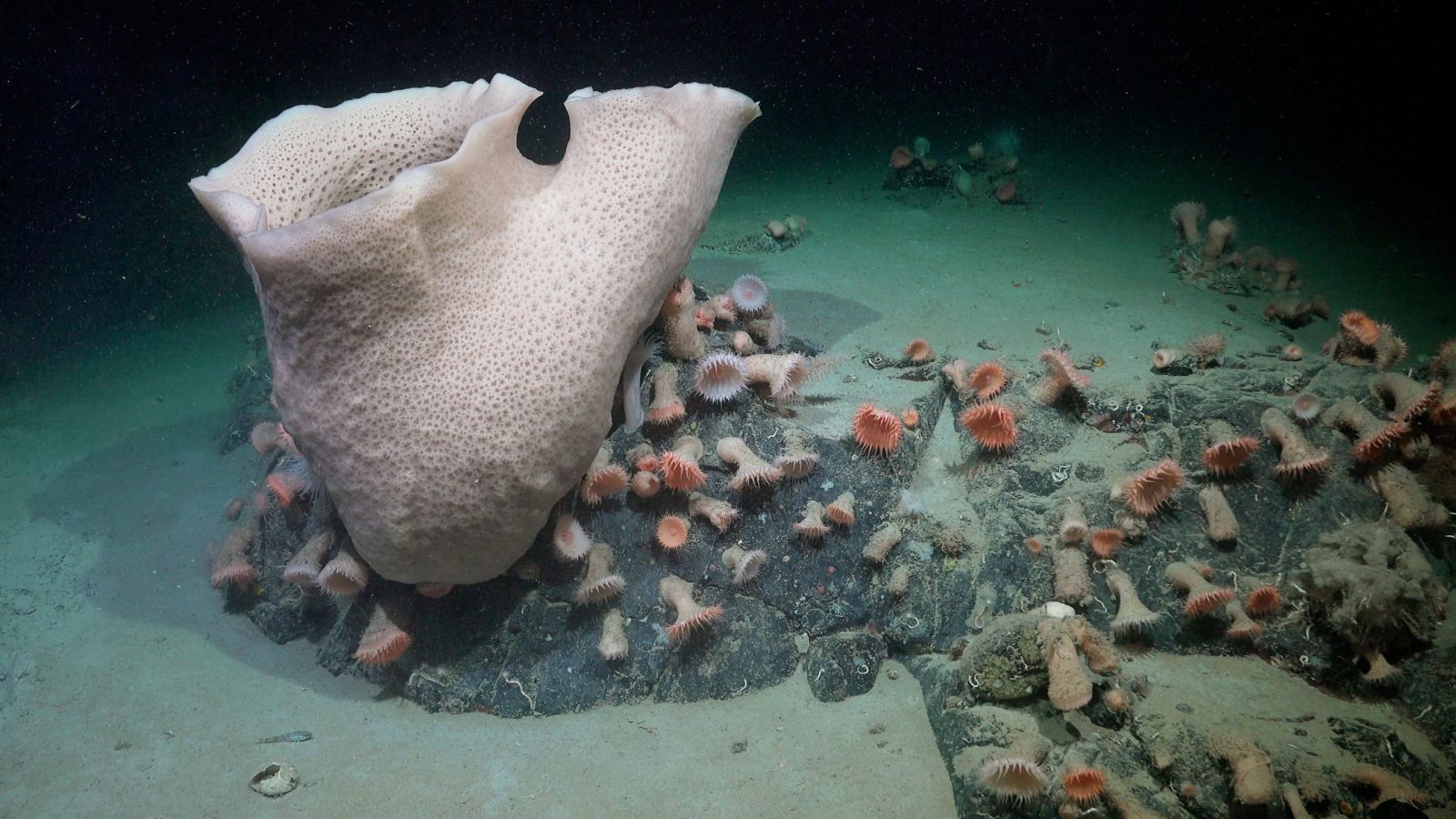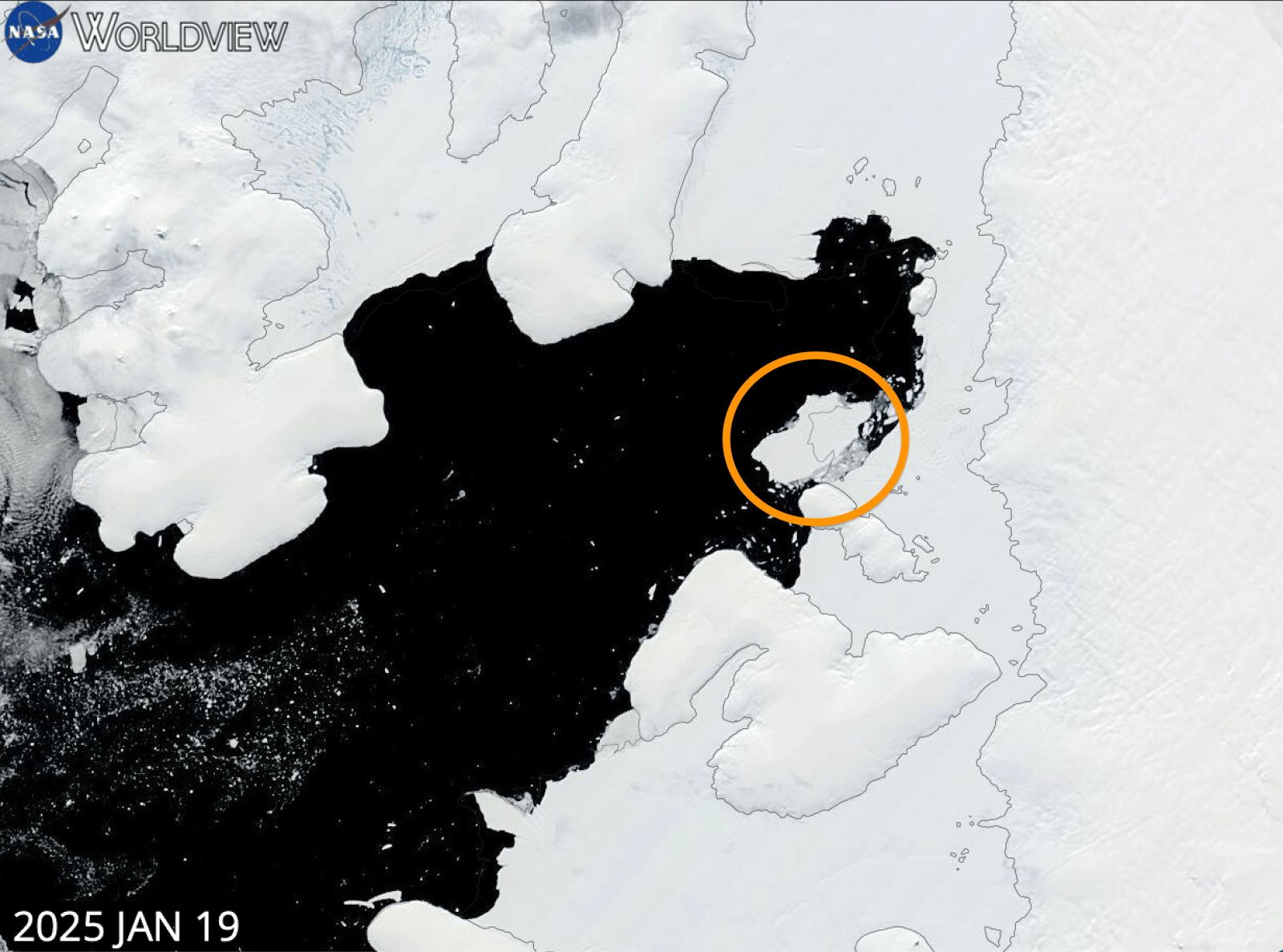A massive iceberg breaks away, revealing surprising ecosystem hidden for centuries 🦑
Published by Cédric,
Article author: Cédric DEPOND
Source: Schmidt Ocean Institute
Other Languages: FR, DE, ES, PT
Article author: Cédric DEPOND
Source: Schmidt Ocean Institute
Other Languages: FR, DE, ES, PT
Follow us on Google News (click on ☆)
The expedition, conducted in December 2024 in the Bellingshausen Sea, was able to study this usually inaccessible area thanks to a unique opportunity. The sudden calving of iceberg A-84, the size of Chicago, exposed seafloors hidden for centuries beneath the George VI Ice Shelf.

A large sponge, a group of anemones, and other life forms are visible at nearly 750 feet (230 meters) deep in an area of the seafloor previously covered by the George VI Ice Shelf. Sponges can grow very slowly, sometimes less than an inch (2 cm) per year. The size of this specimen suggests that this community has been active for decades, if not centuries.
An unexpected biodiversity
Exploration using a submarine robot revealed an extraordinary variety of species, including giant sponges, cup corals, icefish, and octopuses adapted to permanent darkness. Some organisms, due to their imposing size, appear to be several centuries old.
Researchers identified several species potentially new to science, particularly among crustaceans and polychaete worms. These communities developed despite the total absence of light, under conditions comparable to deep-sea hydrothermal vents.
The ecosystem likely relies on nutrient supply from ocean currents, a mechanism of particular interest to biologists. Sponges may play a key role by filtering organic particles carried by the water.
A window into the past and future
Sediment cores collected contain valuable records of Antarctic ice history. Their analysis will provide a better understanding of the natural cycles of ice shelf formation and disintegration.

Corrected reflectance MODIS satellite imagery showing the iceberg detached from the George VI Ice Shelf in the Bellingshausen Sea on January 19, 2025.
Scientists also measured the current impact of ice melt on the water's physicochemical properties. The data collected will help refine climate models predicting future sea level rise.
This expedition marks a turning point in the study of subglacial environments, combining for the first time biological observations, oceanographic surveys, and geological analyses. Full results will require several years of processing.